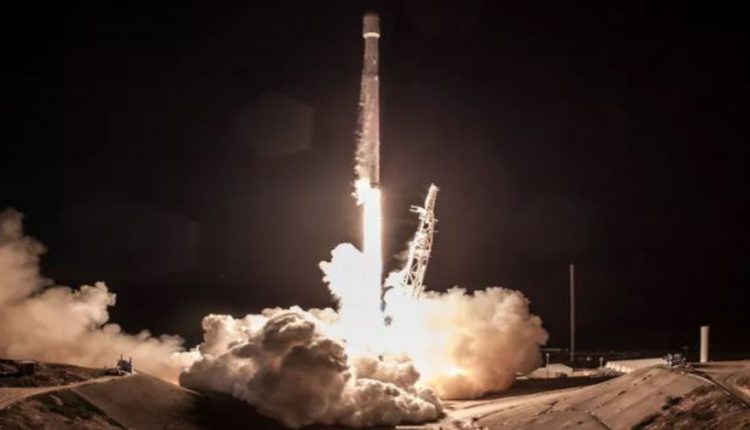SpaceX to launch the first two space internet satellites
The first of the next 12,000 yet to come!
As everyone calms down from SpaceX’s first Falcon Heavy mission, the company certainly isn’t winding down and is getting back to its routine with another Falcon 9 launch this weekend.
The rocket is slated to take off from California early Sunday morning, sending up an Earth-observation satellite called Paz for Spain. The rocket will also have two additional satellites hitchhiking along for the ride: prototype probes built by SpaceX to test out the technology needed to beam down internet from space.
Sending up these two test spacecraft – named Microsat-2a and Microsat-2b – is a big first step in SpaceX’s long-term plans to create satellite internet.
The company wants to create a giant constellation of nearly 12,000 satellites that will orbit in a synchronized dance above Earth, beaming internet connectivity to antenna receivers on the planet’s surface. #
One set of 4,425 satellites will sit about 700 miles up, while 7,518 satellites will sit about 200 miles up and operate on a different radio frequency. Such a massive satellite fleet will be constantly in motion around the planet and will supposedly be able to provide coverage to basically any spot on Earth at all times.
SpaceX expects the system, called Starlink, to be a big moneymaker. Financial projections obtained by The Wall Street Journal in 2017 show that the company expects to have more than 40 million subscribers to the service by 2025, amounting to $30bn in revenue that year.
Of course, there’s a lot of complexity to the system that SpaceX needs to figure out first. The company needs to be able to simultaneously coordinate thousands of satellites in non-geostationary orbit at all times, meaning they won’t stay in a fixed position above the planet.
Then there’s the technology needed to receive the internet on Earth. The satellites will constantly be moving over different patches of land, so the receiving antennas will need to be able to rapidly figure out which satellite is best to communicate with at any given time.
Going above and beyond
Above all, SpaceX needs access to part of the radio spectrum – the range of airwave frequencies that will be used to send the internet down from space. SpaceX has filed numerous applications with the Federal Communications Commission, which is responsible for dictating how commercial satellite companies use those airwaves, and on Wednesday, FCC chairman Ajit Pai made a statement showing his enthusiasm for the project.
“Following careful review of this application by our International Bureau’s excellent satellite engineering experts, I have asked my colleagues to join me in supporting this application and moving to unleash the power of satellite constellations to provide high-speed internet to rural Americans,” Pai said in a statement.
Pai continued: “If adopted, it would be the first approval given to an American-based company to provide broadband services using a new generation of low-Earth orbit satellite technologies.” When and if the application will be approved is unclear, though Pai’s support makes the approval much more likely.
Putting working satellites in orbit will help SpaceX stake its claim to the spectrum. Then, the company hopes to launch its first operational satellites in 2019 – the same year that competitor OneWeb hopes to bring its first internet satellites online. However, the company is keeping quiet on Microsat-2a and Microsat-2b for this weekend’s launch. The main goal of the mission is to launch Paz, and SpaceX will be focusing on that.
The Paz satellite will be going to a low orbit that runs over the poles, where it will be used by Spanish commercial companies and the government of Spain. The Falcon 9 taking the satellite to space will be another one of the company’s used boosters, but the vehicle won’t be attempting a landing after takeoff. (SpaceX has not given a reason for that.)
The launch, scheduled to take off from Vandenberg Air Force Base on Sunday was originally meant to launch Saturday but SpaceX decided to delay a day to have more time to check on the rocket’s systems.
Additionally, the timing of this flight may mean the rocket makes another show in the sky – similar to the launch that freaked out Los Angeles in December. It’ll be going up right around sunrise in California, so the lighting at that time could illuminate the gas surrounding the rocket as it ascends.
SpaceX’s coverage should begin about 15 minutes before takeoff, so keep your eyes peeled and be ready.

